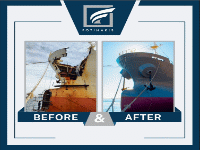Trade Talks Stumble as Tariff Deadlines Approach
The countdown is on for the China–US tariff agreement, set to wrap up on august 14. but for US importers, the pressure is even more intense as temporary tariff halts—meant to facilitate trade talks—are likely to end by July 9.
So far, only the UK has managed a preliminary deal with the US. Talks with other major players like the EU, South Korea, and Japan are at a standstill due to America’s firm stance on keeping its hefty 25% auto tariffs.
President Trump has hinted that he might not finalize deals with everyone in time and could resort to imposing tariffs unilaterally. However, it’s still uncertain if these would revert back to April’s announced levels.
The ambiguity surrounding deadlines adds another layer of confusion: it’s unclear whether goods need to be shipped by those dates or just arrive in the US by then. If it’s arrival-based, that drastically shortens shipping windows; containers from Asia would need quick turnaround times within weeks.
Surge in ocean Freight Demand
the recent pause in China–US tariffs has sparked a notable increase in ocean freight demand across the pacific after a significant drop when hefty tariffs were imposed earlier this year.
This uptick prompted carriers to raise rates mid-month between $1,000 and $3,000 per FEU (Forty-foot Equivalent Unit), with further increases planned for early June. They aim for rates as high as $8,000/FEU—similar levels seen during last summer’s peak season along Asia–US West Coast routes.
As of monday according to Freightos data, daily transpacific rates had already jumped about $1,000/FEU for East Coast shipments (now at $4,400/FEU) and increased by $400/FEU for West Coast deliveries (now at $2,800/FEU).
Carriers are hustling to reinstate services that were paused during april’s downturn but face challenges since many vessels have been reassigned elsewhere during that period. This shift has led to equipment shortages just when demand is picking up again.
Navigating Congestion Challenges
Piling congestion and weather-related delays at key Chinese ports are also driving container prices higher. As deadlines loom closer, shippers may increasingly favor West Coast ports due to their quicker transit times—a strategic move against ticking clocks!
Despite this rebound in activity though some experts suggest that while demand may rise slightly due to ongoing tariffs on Chinese goods being around 30%, we shouldn’t expect any dramatic surges before August hits; this could signal an early start but also an earlier-than-usual peak season wrap-up!
A Shift in Airfreight Dynamics
The halt of de minimis eligibility for Chinese products has led airfreight volumes between China and the US—especially chartered freighters—to plummet significantly. Consequently much of this capacity is now absent from transpacific routes.
Bizarrely enough though spot rates remain high! The Freightos Air index recently reported steady China-US airfreight costs holding firm around $5.50/kg similar levels seen back in early April!
This previously available freighter capacity might soon find new homes elsewhere wich could shake things up rate-wise beyond just American shores!
A glance towards Asia-Europe ocean freight shows no seasonal boost yet despite ongoing diversions through Red Sea routes—a stark contrast compared with last year when shippers began booking well ahead of time anticipating longer voyages ahead!
This month carriers have rolled out GRIs aiming towards raising northern Europe rates close around $3,200/FEU while Mediterranean costs hover near about$4 ,500 / FE U —both figures reflecting roughly a thousand-dollar increase yet still trailing behind last year’s June highs ranging from six thousand upwards !
Content Original Link:
" target="_blank">




















































